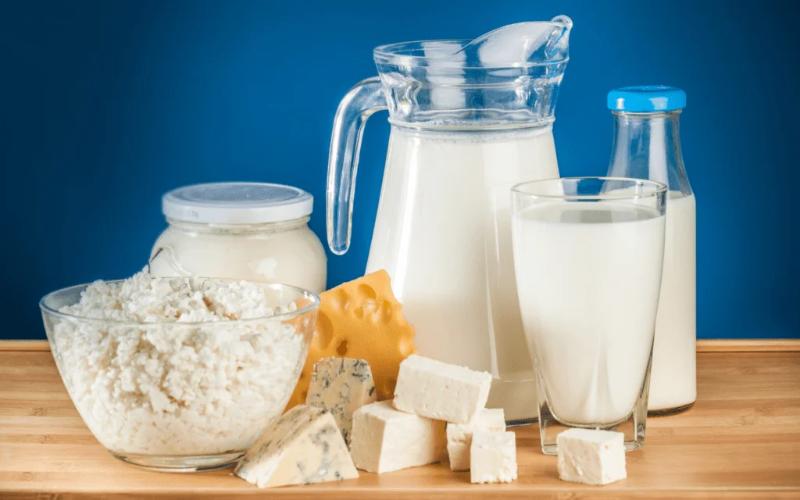USDA Retains Flavored Milk in Schools Amid Sugar and Salt Reductions
Source: The DairyNews
In a recent decision by the USDA, U.S. school meals will see a reduction in sugar and salt, yet continue to include both low-fat and fat-free flavored milks, following current requirements. According to the National Milk Producers Federation (NMPF), removing flavored milk from school menus would detrimentally impact childhood nutrition, as flavors tend to boost milk consumption among children.

Miquela Hanselman from NMPF noted significant drops in milk consumption and school lunch program participation when flavored options were excluded. She highlighted that flavored milk provides the same essential nutrients as its unflavored counterpart, crucial for children's intake of calcium, potassium, and vitamin D. Moreover, flavored milk drinkers reportedly have higher intakes of several vitamins and minerals, potentially protecting against childhood obesity.
The USDA's decision follows extensive discussions, ultimately maintaining the existing policy allowing flavored and unflavored milk in schools across all grades. Starting in the 2025/26 school year, new limits will be implemented on added sugars in yogurts and flavored milks, alongside a phased reduction in sodium by 2027/28 to help manufacturers adapt their formulations.
Hanselman praised the dairy industry's proactive efforts over the past decade to reduce added sugars in school milk, which now contains significantly fewer calories and sugars than before. She also sees the new standards as a catalyst for innovation in developing healthier dairy products while highlighting the functional necessity of sodium in products like cheese.
Mixed reactions emerged from various organizations. The International Dairy Foods Association (IDFA) supported the rule, emphasizing the importance of including lactose-free milk as a reimbursable option to enhance nutrition equity. However, IDFA expressed disappointment over missed opportunities to introduce higher-fat milks into schools, advocating for the "Whole Milk for Healthy Kids Act" to potentially reintroduce whole and 2% milk options.
Conversely, the American Medical Association advocated for stricter limits, particularly on sodium, and suggested a complete removal of flavored milk to combat obesity. The School Nutrition Association (SNA) welcomed the more attainable standards but emphasized the need for additional resources to fully implement the new regulations.
Critics like the Center for Science in the Public Interest (CSPI) argued that while the updates align more with scientific guidelines, there is still room for improvement in reducing sugar content in school meals.
As debates continue, the potential introduction of whole and 2% milk back into schools hinges on legislative decisions, with ongoing discussions about the impact of dairy fat on health and the role of school meals in child nutrition.
The USDA's decision follows extensive discussions, ultimately maintaining the existing policy allowing flavored and unflavored milk in schools across all grades. Starting in the 2025/26 school year, new limits will be implemented on added sugars in yogurts and flavored milks, alongside a phased reduction in sodium by 2027/28 to help manufacturers adapt their formulations.
Hanselman praised the dairy industry's proactive efforts over the past decade to reduce added sugars in school milk, which now contains significantly fewer calories and sugars than before. She also sees the new standards as a catalyst for innovation in developing healthier dairy products while highlighting the functional necessity of sodium in products like cheese.
Mixed reactions emerged from various organizations. The International Dairy Foods Association (IDFA) supported the rule, emphasizing the importance of including lactose-free milk as a reimbursable option to enhance nutrition equity. However, IDFA expressed disappointment over missed opportunities to introduce higher-fat milks into schools, advocating for the "Whole Milk for Healthy Kids Act" to potentially reintroduce whole and 2% milk options.
Conversely, the American Medical Association advocated for stricter limits, particularly on sodium, and suggested a complete removal of flavored milk to combat obesity. The School Nutrition Association (SNA) welcomed the more attainable standards but emphasized the need for additional resources to fully implement the new regulations.
Critics like the Center for Science in the Public Interest (CSPI) argued that while the updates align more with scientific guidelines, there is still room for improvement in reducing sugar content in school meals.
As debates continue, the potential introduction of whole and 2% milk back into schools hinges on legislative decisions, with ongoing discussions about the impact of dairy fat on health and the role of school meals in child nutrition.














